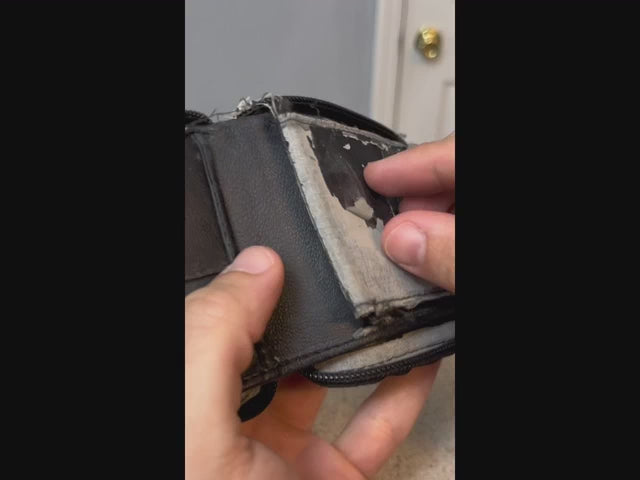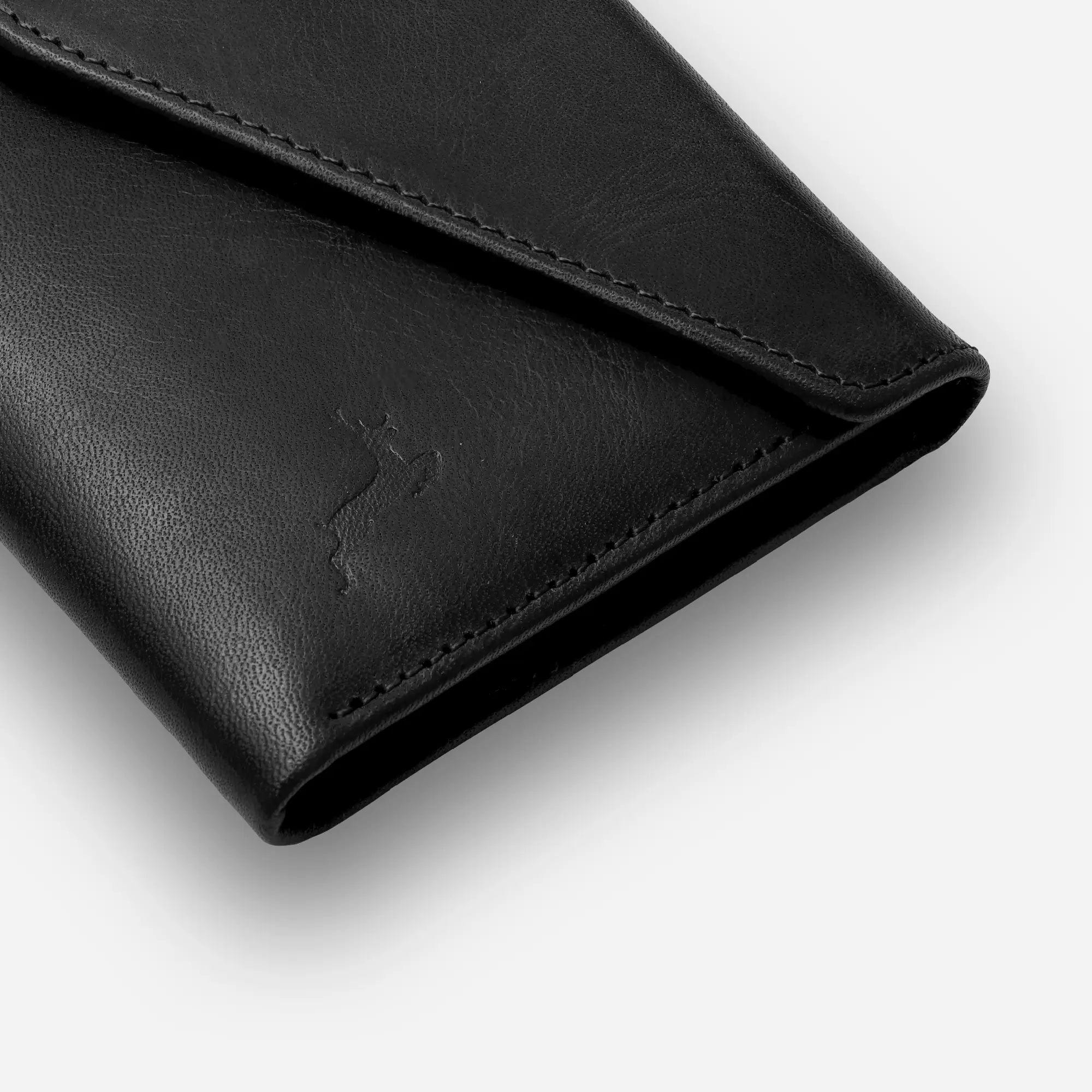Full Grain Leather Wallets For Men
Slim Bifold Leather Wallet
Handmade Slim Leather Card Holder
Crazy Horse Leather Wallet
Slim Bifold Leather Wallet Indicolite
Slim Bifold Leather Wallet Onyx
Premium Leather Wallets for Men
You've come to the right place if you're looking for a nice leather wallet for men.
Our wallets are handmade with the finest materials and designed with your specific needs in mind.
Deerhandmade leather wallets are build to last, outdoorsy quality that differentiates them from other highly regarded luxury products.
And all of our men's and womens wallets are made from full grain and top grain leather, ensuring durability and style that stands the test of time and nature.
Our wallets are more than just accessories; they represent quality and workmanship.
You will be able to admire them for years to come.
Why Choose a Leather Wallet?
Leather wallets aren't just for fashion. This is a timeless investment that will last a lifetime.
The unique leather smell of a new wallet, its wear points that soften over time, and the rich patina that develops are all part of the aging process that adds character and charm.
Choosing a leather wallet from Deerhandmade.com is selecting a product that embodies quality, style, and longevity.
Whether you're going hunting on the weekend or just using it on a daily basis, our wallets are made to fit your life.
Types of Leather Wallets
Understanding the different wallet styles, types of leather wallets and how they fit your needs helps you choose the right one:
Bifold Wallets: A classic wallet style, these wallets offer a slim profile while holding essentials. You'll love it if you're looking for simplicity and efficiency.
Trifold Wallets: Leather Trifold wallets are a good choice for those people who carry a lot of cards and cash. They're still compact despite having a lot of capacity.
Card Holders: A cardholder is a sleek and practical choice if you're a minimalist. This is perfect for people who travel light and want quick access to their cards.
Money Clip: It's a modern alternative to the traditional wallet, and money clips often have a few card slots so that you can carry your cash in a minimalist way.
About Our Leather Wallets for Men
Slim Bifold Leather Wallet: This leather wallets for men is perfect for those who prefer a minimalist statement-maker.
You can put cards and cash in it, yet it's sleek and fits comfortably in your pocket. You can wear it casually or formally because of its refined look.
Handmade Leather Card Holder: Perfect for the non-traditionalist who values simplicity.
You can keep your business cards, ID cards, and a few essentials in this genuine leather wallet, which makes it perfect for weekend adventures or a night on the town.
Crazy Horse Leather Wallet: Known for its durability, this wallet ages beautifully, developing a rich grain patterning and unique embellishments over time.
If you like a live-in look, this is the perfect choice for you.
How to Care Leather Wallets?
Keeping your wallet in good condition requires regular conditioning.
Use a high quality leather cleaner and a soft & clean cloth to keep the leather supple and prevent it from drying out.
Your wallet will look good even after years of use with this simple care routine.
Choose the leather wallet for men that complements your style the most and embrace it like never before.
Is Deerhandmade Wallets Handmade?
All of our leather wallets & accessories for men are made from premim cowhide leather that is carefully inspected for grain patterning and strength.
You can use it for business cards or weekend bags because tanning enhances the leather's natural beauty.
What makes our wallets unique? All our items go through rigorous quality checks and are meticulously crafted.
Our commitment to excellence is reflected in a three years of warranty.
Our Wallets Make a Memorable GIft
Looking for a meaningful and practical gift?
Our leather wallets are perfect for birthdays, anniversaries, and other special occasions.
It is a gift that will be treasured for many years to come due to its classic design, exceptional craftsmanship, and luxurious packaging.
The leather smell and tactile feel of our wallets make them a memorable gift.










